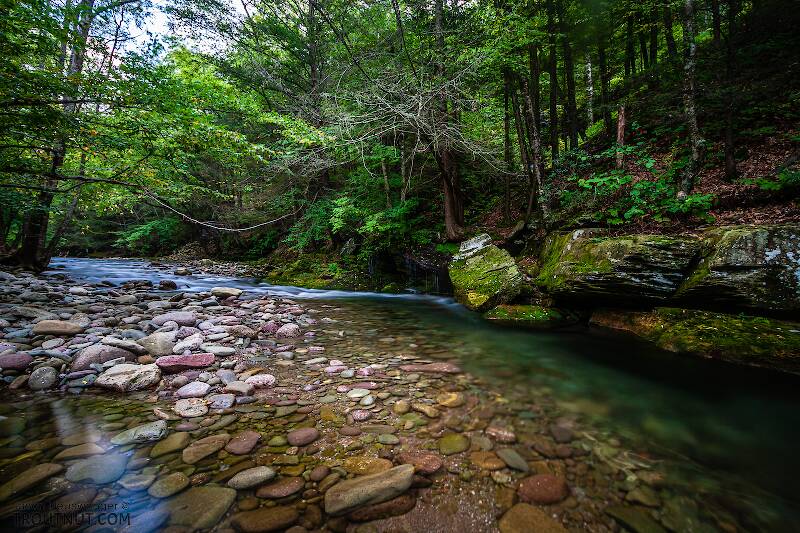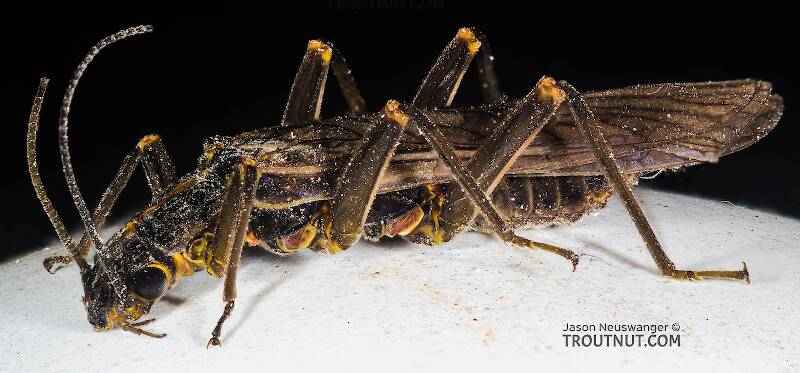
Blue-winged Olives
Baetis
Tiny Baetis mayflies are perhaps the most commonly encountered and imitated by anglers on all American trout streams due to their great abundance, widespread distribution, and trout-friendly emergence habits.

Mayfly Species Fallceon thermophilos
Where & when
In 1 records from GBIF, adults of this species have been collected during July (100%).
Species Range
Physical description
Most physical descriptions on Troutnut are direct or slightly edited quotes from the original scientific sources describing or updating the species, although there may be errors in copying them to this website. Such descriptions aren't always definitive, because species often turn out to be more variable than the original describers observed. In some cases, only a single specimen was described! However, they are useful starting points.
Male Spinner
Wing length: 5 mm
Abdominal tergites 2-6 of male imago dark olive brown, distinguished from all other known species by the very long third vein of the hind wing, which equals the other two veins in length.
Head and thorax shiny blackish. Legs smoky brown, with paler tarsi. Wings hyaline, venation pale. 7-8 stigmatic cross veins in the fore wing, without granulations. Hind wings long and narrow, and with three longitudinal veins; the third vein runs close to the hind margin, and equals the first two in length; between veins 2 and 3 is a single intercalary. The costal projection is rather blunt and short (see fig. 163).
Abdominal tergites 2-6 dark olive-brown, with pale narrow rings on the posterior margins. Tergites 7-10 opaque, brighter brown. Sternites pale ochreous. The bases of the forceps dusky, the two apical joints whitish; the last joint is narrow, and almost as long as the preceding one.
Start a Discussion of Fallceon thermophilos
References
- Needham, James G., Jay R. Traver, and Yin-Chi Hsu. 1935. The Biology of Mayflies. Comstock Publishing Company, Inc.
Mayfly Species Fallceon thermophilos
Species Range
Resources
- NatureServe
- Integrated Taxonomic Information System
- Global Biodiversity Information Facility
- Described by McDunnough (1926)


